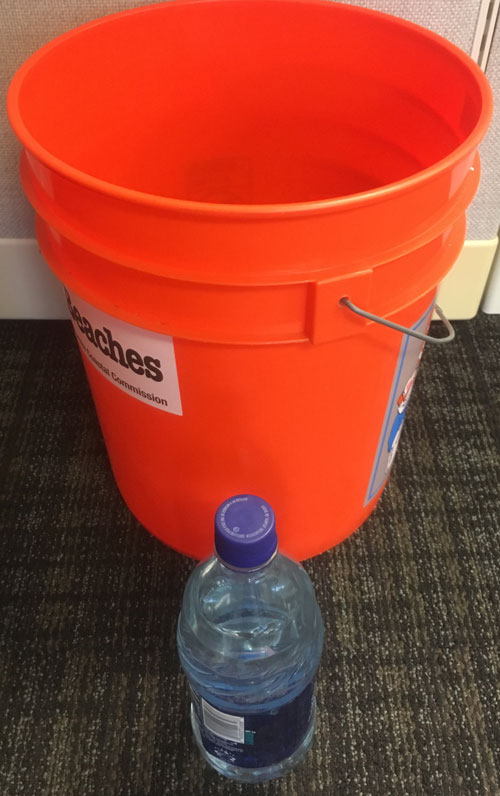Materials
Procedure:
Either demonstrate while taking suggestions from the class, or have sets of materials that groups or individuals can investigate on their own. This activity can be done with minimal instruction if students are used to exploring phenomena.
What are the properties of a plastic bottle as it interacts with water? Does it sink or float? Can it also do the opposite? Students will discover that the plastic bottle sinks and the plastic lid floats. (This is usually true, but check your chosen materials.) Most plastic consumer items have a "chasing arrow" symbol containing a number. Some people think this means the item is recyclable, but it actually tells you what kind of plastic it's made from. Most water and soda bottles are #1 (PET, polyethylene terephthalate) or #2 (HDPE, high density polyethylene). These plastics sink in water (although students may discover that they can make the bottle float). Lids are often #5 (PP, polypropylene), which floats in water. What are the implications of these properties? What animals might come into contact with these different types of plastics? Two examples are albatross (ocean birds that collect their food from near the surface) and gray whales which feed by stirring up the sediment on the sea floor. In fact, bottle caps are commonly found in the digestive systems of Laysan albatross on Midway Island. Can your students come up with conditions that would cause a polypropylene item to sink?
After this investigation you may follow up with the activity You Are What You Eat from Waves, Wetlands, and Watersheds and direct students to the webpage The Problem with Marine Debris.
You can download a slideshow from Gilroy
High School teacher Jeff Manker, reflecting on his experience visiting Midway
Island, showing the impact of plastic pollution on the Laysan albatross that nest there, and how choices that
students make on the mainland can help address the problem.
Provides Support for NGSS Performance Expectations:
